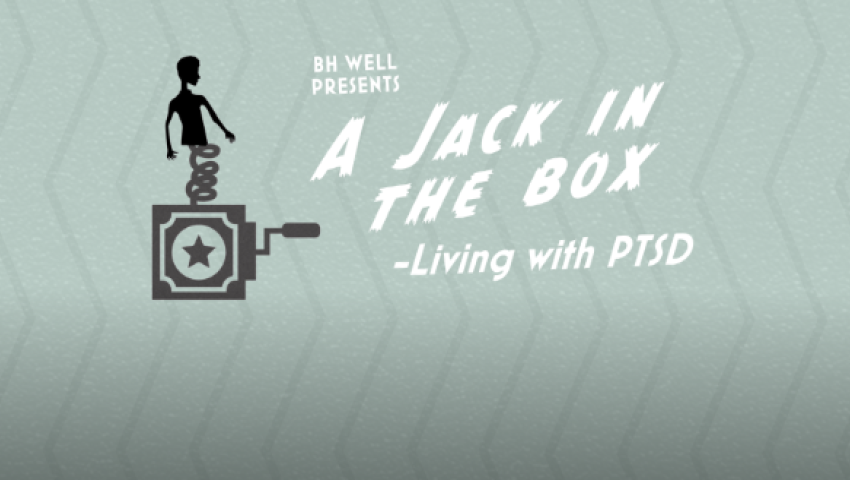
A Jack In The Box- Living With PTSD
I’m a jack-in-the-box, safe and secure in the confines of my box. Sadly, this safety and security are short-lived. Outside the box, the crank is constantly turning, turning, and without warning, I’m thrust into an intense rollercoaster of fear, guilt, and anger.
Read Transcript
I’m a jack-in-the-box, safe and secure in the confines of my box. Sadly, this safety and security are short-lived. Outside the box, the crank is constantly turning, turning, and without warning, I’m thrust into an intense rollercoaster of fear, guilt, and anger. I’m triggered by a sight, a smell, a taste, or a noise I’m thrust into my past trauma, reliving each physical sensation and emotional experience either through flashbacks while awake or through nightmares while asleep. I’m engulfed by my flashbacks and nightmares, struggling to snap out.
As I realize there is no immediate threat, I begin to calm down. My body loses all energy and collapses, mentally exhausted. At the first opportunity, I flee back into my box, willing myself to brave the moments ahead. Despite feeling composed back in the box, I’m left feeling on edge and on guard. When will I be propelled out of my box again? What will the trigger be that time? Where will I be and who will be around me? Not knowing when I will burst out of the box not only alarms me, but also alarms those who exist outside of the box: my loved ones, my coworkers, or even strangers on the street or in the store.
The triggers, flashbacks, and nightmares happen again and again over months and months. Over time, I try to take myself away from anything and everything that reminds me of distressing memories. Sometimes I am numb to my feelings. No matter what I do to avoid my triggers, I’m reminded of my experiences again and again.
That’s why I decided to get help! My mental healthcare provider helped me through a plan that involved some medications and therapy to help with my problem. I learned to recognize my triggers and gained some skills to take care of the challenges with my feelings, thoughts and behaviors. Then one day, I popped out of my box and realized ‘it is just a box’. I realized my bad memories can exist alongside new and happier memories that I am making now. Then I decided that while the box remains, and while the bad memories are still there, I can choose to face my trauma while being supported by my mental healthcare provider. The more I learn about facing my trauma, the more I’m reminded that I don’t have to pop out of anything. I can just be.
If you or someone you know is experiencing post-traumatic stress disorder (PTSD), there is hope. Contact your health provider or call the National Helpline at 1-800-662-HELP (4357) supported by the Substance Abuse and Mental Health Services Administration (SAMHSA).
References
Administration for Community Living. (n.d.). MHDD: Post-Traumatic Stress Disorder. The Mental Health and Developmental Disabilities National Training Center. Retrieved June 7, 2022, from https://rise.articulate.com/share/_krWkjSaEunOmpN8wSRR6k2Zl9WK Hwzz#/
Cleveland Clinic. (2021, June 15). Living With PTSD? How to Manage Anxiety and Flashbacks. Cleveland Clinic. Retrieved June 7, 2022, from https://health.clevelandclinic.org/living-with-ptsd-how-to-manage-anxiety-and-flashbacks/
Torres, F. (2020, August). What is Posttraumatic Stress Disorder (PTSD)? American Psychiatric Association. Retrieved June 7, 2022, from https://psychiatry.org/patients-families/ptsd/what-is-ptsd
U.S. Department of Health and Human Services. (2019, May). Post-Traumatic Stress Disorder. National Institute of Mental Health. Retrieved June 7, 2022, from https://www.nimh.nih.gov/health/topics/post-traumatic-stress-disorder-ptsd